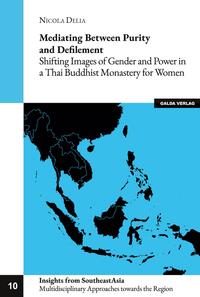
This book investigates shifting gender dynamics in a Buddhist monastery for women in Northern Thailand. Based on ethnographic fieldwork with a community of female monastics in the province of Chiang Mai, the study explores women’s agency in recently establishing, with success, the region’s first known order of fully ordained Buddhist nuns (bhikkhunī). Central to the investigation are tensions arising from novel images of women’s bodies clothed in saffron robes that have historically been associated with male power and prestige. The study asks how local veneration of charismatic nuns is reconciled with longstanding beliefs in a female capacity to defile or destroy sacred potency. Time-honoured notions of menstrual pollution are revisited, as are ways in which these are reproduced as well as reconfigured in the female monastery. Particular attention is also paid to solidarity from local monks with women’s controversial ordination projects in Chiang Mai. The book draws on concepts of practice and performitivity, ascetic charisma and protective power. In so doing it highlights processes by which female monastics in a Northern Thai context navigate fluid gender boundaries as they lay claim to Buddhist merit and spiritual potency of a kind long attributed in Thailand to monks. Inspired by a proposal put forward by Nicola Tannenbaum for the study of Thai gender, these findings are in turn linked to constructions of power and gendered access to it observed across Southeast Asia.